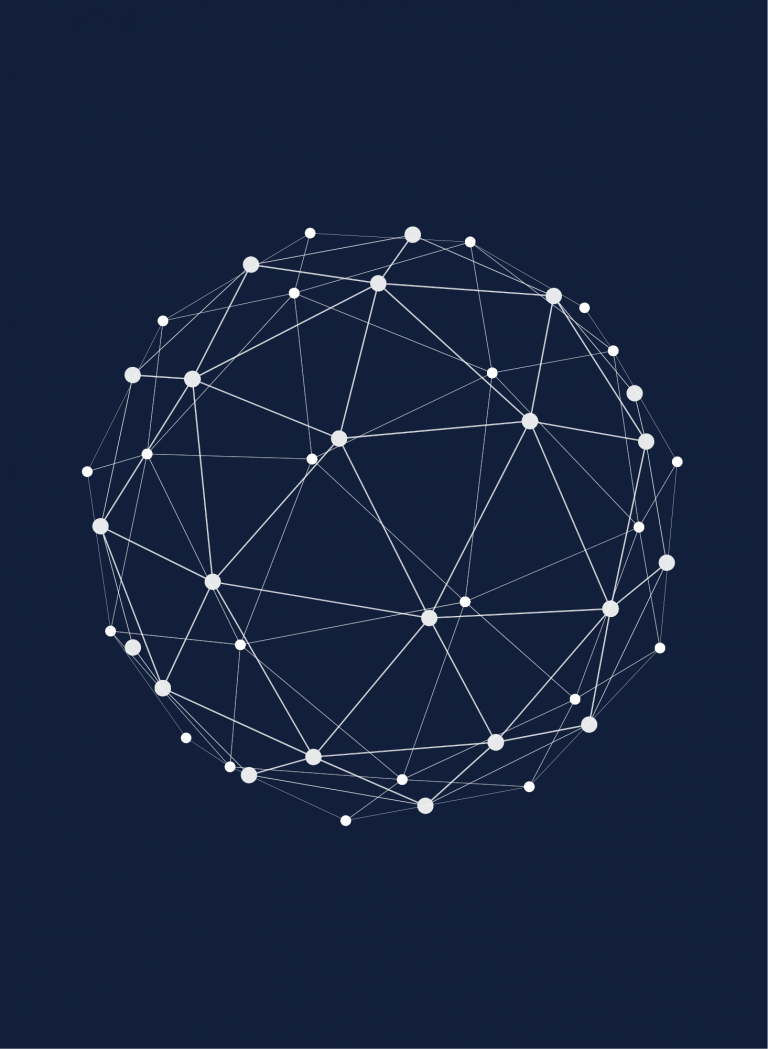“You might laugh at this sketch of the future: Treating without a DSM diagnosis?” NSMD's scientific director, Professor Anita Jansen, also professor of Clinical Psychology at Maastricht University, wrote a background article for the BIG magazine of mental health care training institute RINO Amsterdam. Below is the full text, which was published in June 2022.
Suppose you are able to provide tailor-made treatment, intervening very directly and precisely in the process that is causing the patient's problems. Because of your accurate intervention, the patient quickly improves. Prior to your treatment, a DSM diagnosis was not necessary. Of course, you did conduct a proper intake; you were assisted in this by a smartphone application.
This app travels with the patient for a few weeks and registers at more or less random moments what the patient does, thinks, experiences and feels throughout the day. Some things are registered automatically, such as physical activity, location and heart rate. Behaviour, thoughts, events and feelings are entered into the app by the patient several times a day. The app then succeeds in drawing a customised network of complaints, symptoms and contexts from the jumble of data it produces. This empirically determined network unmercifully exposes the causal relationship between the various elements of the network. It thus becomes clear, for example, that thinking about holidays leads to stress. That stress worsens the compulsions, which in turn leads to insomnia and excessive drinking. Then the treatment begins, because you know exactly what to do.
You might laugh at this sketch of the future. Treating without a DSM diagnosis? Collecting and analysing a lot of empirical data before treatment? Make sure that interventions are fast and effective? Most patients cannot be treated easily and quickly: they have a complex problem and often comorbidity. Yet this is what we are aiming for with our 'new science of mental disorders' project: accurate treatment based on an empirical network diagnosis. Who are we? Twenty researchers working together in a national consortium. At the end of 2019, we received a huge bag of money from the Ministry of Education, Culture and Science to carry out this ambitious research. The Netherlands Organisation for Scientific Research (NWO) selected our project within the gravity programme that stimulates excellent research by consortia that are among the world's best. We are proud of this, but also very happy that we are allowed to do this exciting research. It is a big adventure that will hopefully contribute to better treatments within the mental health services. I would like to tell you more about what our research entails and what it could mean for mental health care and future practice. But first a little more about the urgency of it all.
The problem
The problems of the current mental health care system are substantial. In addition to structural systemic problems (long waiting lists, high costs, accessibility, role of the insurer, etc.) there are also substantive problems. We have evidence-based treatments that turn out to be better than most other treatments and are described in guidelines and/or care standards for the mental health sector. However, evidence-based treatments are not as good as we would like them to be: roughly half of all patients are well served by evidence-based treatments, even in the somewhat longer term. For the other half, this is not the case.
Another problem is that patients receive treatment that fits their main diagnosis. This sounds logical and it is, but we also know that about two thirds of patients suffer from multiple problems: comorbidity is the rule rather than the exception. Depression, anxiety, substance dependence, trauma; in many cases these and/or other problems go together. Nowadays, we think of comorbidity as the presence of several disorders or behavioural problems in one person: someone has a depressive disorder and an eating disorder. But because comorbidity occurs so frequently, the question is whether the comorbid constellation of symptoms should not simply be seen and treated as 'the' problem.
Another problem is that there can be large differences between syndromes with the same DSM diagnosis. For example, two people with largely different symptoms may both be diagnosed with depressive disorder if they have 5 out of 9 symptoms. Diagnosis-treatment combinations (dbc's) then prescribe the same treatment for these two patients, even though their illnesses look completely different.
These and undoubtedly other problems can be traced in part to the tradition of making a diagnosis using the Diagnostic and Statistical Manual of Mental Disorders ('the DSM'). This classification system comprises some twenty categories with more than 250 different diagnoses. After a thorough intake, the specific diagnosis follows, which dictates the path to treatment and ensures that the care to be provided is financially secured. However, the DSM classification system is medically oriented and a medical diagnosis suggests a cause for the illness. Although the DSM explicitly states that it only describes and classifies, it is tempting to think that the diagnosis explains the corresponding symptoms. People are sad, suffer from sleeplessness and lack of appetite because they are depressed. The depression is the cause of the symptoms. Someone feels fat, doesn't eat and moves excessively because she suffers from anorexia nervosa. But these are reasoning errors: the depression and anorexia nervosa are not the causes of these symptoms. At best, they summarise the symptoms; they define a clinical picture. While symptoms of a medical illness often do have an underlying common cause, this does not seem to be the case for mental illness. The American professor Richard McNally writes extremely aptly: 'a person can have cancer yet be currently asymptomatic, whereas it makes no sense to say that an asymptomatic person has depression' (McNally, 2016, p.101).


Changing course
More than a decade ago, a group of psychologists from Amsterdam, led by Denny Borsboom and Han van der Maas, introduced the network approach to psychological problems (Borsboom, 2008; Cramer, Waldorp, van der Maas & Borsboom, 2010). This network approach offers an entirely new perspective on behavioural problems: experts also refer to it as a 'paradigm shift'. In short, the network approach implies that a mental disorder is not the cause of symptoms, but rather the consequence of symptoms that influence each other. That symptoms influence each other is something you see in practice every day: someone who sleeps badly because he is constantly brooding can concentrate badly the next day. This results in stress and fatigue and leads to excessive drinking and pessimism (to name but one example). How exactly complaints interact can be seen in symptom networks, which can be created by analysing the data from the aforementioned app. Comorbidity is not a problem for symptom networks. The symptom within a network that links symptoms of one DSM diagnosis with symptoms of another DSM diagnosis functions as a 'bridge symptom' between the two DSM diagnoses. For further details on the network approach, I would like to refer to the theme issue Network Theory of the journal ‘Gedragstherapie’ (2019, issue 1).
Our research and your future
Our ambition is to test the network approach to mental health problems. We want to find out whether symptom networks lead to better diagnostics and better treatment. First, we will map the symptom networks of a large and diverse group of patients. While the patients wait for treatment at a mental health institution, they keep track of everything in the app, which measures a broad transdiagnostic palette of symptoms and other relevant variables. We analyse the collected data and use it to create individual symptom networks. We will investigate how stable these networks are, whether we can detect early warning signals, how the networks relate to the classic DSM diagnosis patients receive, whether networks of patients and those of significant others can influence each other and much more. Another important question is whether latent variables really do not play a significant role or whether we should take them into account. We will find out if and how interventions can change a symptom network, for example: what effects does exposure have on a symptom network? We are also going to perform computer simulations of interventions; from these we can learn which part of a network we can best intervene in for maximum effect. Ultimately, we will also test in clinical practice whether an intervention that is very specifically aimed at an individual symptom network is more effective than the traditional, evidence-based treatment associated with the diagnosis. Such an intervention, tailored to the individual symptom network, targets the symptoms that - according to the network analysis - maintain the network. By intervening very specifically at certain nodes (symptoms) or connections between symptoms, the sick network is dismantled, as it were, resulting in relief of complaints and symptoms. It is a ten-year plan.
Conclusion
If our research convincingly shows that individual network treatments are more effective than the current evidence-based treatments, this should become the standard in mental health care. A DSM diagnosis would then no longer be necessary; the diagnostics would consist of empirically mapping the symptom network with the aid of the app. The tailored intervention aims to disrupt that pathological symptom network. Future practitioners will be trained in assessing symptom networks and carrying out a tailored network treatment. The techniques used for this will probably not differ much from current evidence-based techniques. The main difference lies in being able to focus the intervention more precisely on the most important nodes and connections in the empirically determined network. This targeting of the intervention will make the patient feel better quickly; at least, that is the hypothetical scenario. It is future music, but very beautiful music, exactly to the tune of the patient.
Sources: Cramer, A.O.J., Waldorp, L.J. van der Maas, H.L.J., & Borsboom, D. (2010). Complex realities require complex theories: refining and extending the network approach to mental disorders. Behavioral and Brain Sciences, 33(2-3), 178-193. ‘Gedragstherapie’, theme issue network theory. 2019, issue 1. McNally, R.J. (2016). Can network analysis transform psychopathology? Behaviour Research and Therapy, 86, 95-104.